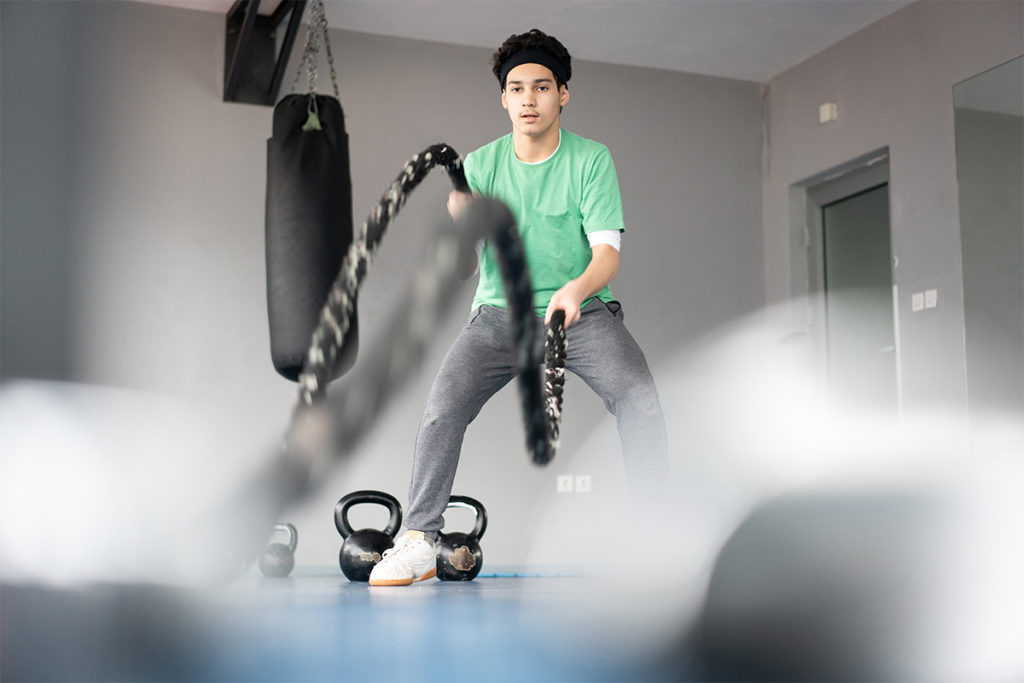Injury Prevention in Small-Group Training
Adopt proactive policies and stay mindful before teaching, during sessions and after an accident occurs.
An instructor is running late to teach a small-group equipment class. He arrives at the studio feeling stressed and has to start class immediately. As he walks into the training room, he learns he has a mixed-level class of five participants, including two who are completely new to equipment work. The prepaid students are anxious to begin.
The instructor leads the group through standard reformer moves and realizes that one participant in particular is fumbling with springs and needs a lot of attention. The more advanced students are getting bored, and he decides to challenge them with a box exercise using straps. As he’s focusing on the one beginning student, another student loses control over her apparatus and cries out in pain over what appears to be a pulled shoulder muscle.
What could the instructor have done to avoid this accident? This article reviews basic injury-prevention tips for small-group Pilates classes and suggests strategies for dealing with challenges.
The Proactive Mindset
Group classes that utilize Pilates equipment are increasingly popular. This profit center is a win-win for both instructor and participants, but not if proper steps aren’t taken to ensure safety. Avoiding accidents like the one described above requires taking proactive measures and respecting the ever-present potential for injury. Let’s examine the factors that contributed to this hypothetical situation.
- The instructor was late, stressed and feeling rushed.
- The class included complete beginners and advanced students, which made it overly diverse. To make matters worse, the instructor didn’t have prior knowledge about the class composition.
- Beginning students hadn’t gone through appropriate equipment orientation.
- The instructor wasn’t experienced or prepped on how to offer progressive cues for a variety of levels.
- The instructor couldn’t effectively attend to each participant’s individual needs.
Studio policies can address some of these issues. Responsible instructors, observing best practices, can deal with the rest.
Policies and Procedures
In general, industry leaders recommend a teacher-student ratio of no more than 1 to 4, but the ratio also depends on the instructor’s experience. A more seasoned trainer may be able to handle more clients. Teachers need to understand the implications of personal issues such as back, neck, hip, knee or shoulder pain. They must also understand the different conditioning levels and be able to offer modifications. In a group, the leader must address these individual concerns fully while simultaneously keeping everyone moving. This can be exceptionally challenging.
These studio policies and practices can make this process easier:
- prescreening clients to identify issues
- forming groups of people at similar levels
- providing instructors with group composition and prescreening information before class
- requiring private training or equipment orientation prior to group class participation
Instructors can minimize injuries by teaching within their scope of expertise and undertaking further preparation before training clients with specific limitations. For example, a new trainer can successfully guide healthy students. However, he or she should have additional education before leading very deconditioned clients or those with chronic conditions like back pain or arthritis. It’s crucial that instructors know how to adapt exercises for each individual.
Teachers should teach mindfully both before and after class, prepare a lesson plan for the specific group and be ready to offer progressions and regressions. A mindful teaching attitude includes taking time to guide clients—demonstrating how to get on and off equipment safely; how to change springs and ropes; and how to lift, move and remove boxes and other props. Exercises that require spotting should be avoided—an instructor can spot only one participant at a time.
What If an Accident Occurs?
Whatever precautions are taken, accidents can and do happen. Here again, a combination of studio policies and instructor preparation can make all the difference. The goal is to provide a professional, effective emergency response that makes a client feel cared for and reduces the risk of lawsuits.
These policies support accident preparedness:
- preparing a written emergency plan
- rehearsing emergency procedures and staging incident report drills
- hiring first aid–trained staff
- acquiring emergency contact information for every client
- filing incident report forms
- requiring waivers or informed consent and having liability insurance
If an accident happens, the potentially injured client must be the first priority. These guidelines are key:
- If necessary (depending on the nature of the accident), offer first aid in addition to calling paramedics.
- Notify the emergency contact person and avoid any defensive comments or assumption of responsibility. Remain calm and focused on ensuring immediate care.
- After the incident, complete reports with only fact-based information, such as date, time, activity and witnesses’ names and contact information.
- Follow up with the client to determine how he or she is doing and what diagnosis, if any, has been made. The instructor’s attitude can make a huge impact, smoothing the client’s feelings or—if the client feels ignored or blamed—fueling her anger.
Any physical activity includes the risk of injury. The benefits of being active, however, make it worth taking this chance. Instructors must do everything possible from a policy and personal perspective to remember this reality and keep Pilates activities, safe, beneficial and rewarding.
SIDEBAR: Equipment Resources
If you own equipment made by the following companies, call these numbers with any questions regarding safety and maintenance:
- Balanced Body™, (800) PILATES, ext. 219
- Peak Pilates®, (800) 925-3674
- STOTT PILATES®, (800) 910-0001, ext. 264
Shirley Eichenberger-Archer, JD, MA
Shirley Eichenberger-Archer, JD, MA, is an internationally acknowledged integrative health and mindfulness specialist, best-selling author of 16 fitness and wellness books translated into multiple languages and sold worldwide, award-winning health journalist, contributing editor to Fitness Journal, media spokesperson, and IDEA's 2008 Fitness Instructor of the Year. She's a 25-year industry veteran and former health and fitness educator at the Stanford Prevention Research Center, who has served on multiple industry committees and co-authored trade books and manuals for ACE, ACSM and YMCA of the USA. She has appeared on TV worldwide and was a featured trainer on America's Next Top Model.





